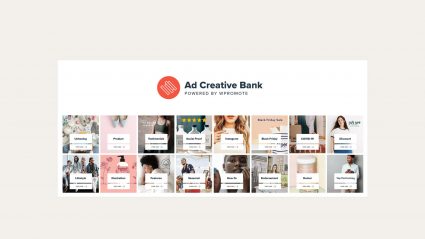I remember as a kid going to the local bank with my parents and being mesmerized by its presence — the tall pillars, expansive marble floor, and the racks of brochures that occupied my attention while my parents were doing “important stuff” with the well-dressed person behind the desk.
While I didn’t understand everything that went on at the bank, I still remember that it was a grand experience. Plus, the security guard would joke with me and I’d leave with a lollipop. My reward.
Your bank’s website should create a similar favorable feeling. Through technology, design, and content, a bank’s website should bring the experience of an in-person branch visit to the digital space. Yet, there are so many bank websites that fall short.
The Kony Digital Experience Survey 2019 found that updating online customer support and improving web navigation are among the 11 areas consumers would like their financial institutions to heavily invest in.
Is your bank doing all it can to optimize your customer’s digital experience? If your website is underperforming, here are three possible reasons why:
1. Lack Of (Good) Content
Your tellers, branch managers, loan officers, and other staff are banking and lending experts, but they aren’t on your website. If a customer or prospect is browsing your site and wants to know how to apply for a mortgage or open a checking account, there’s no one to ask.
An effective website anticipates the questions site users might have and provides content that answers them. Without enough information, users may just get frustrated, leave a website, and go to a competitor.
Thinking Like a Customer
When developing your content, think like a customer. “Weak content is a really big deal — most of it is awful,” said Sam Kilmer, Senior Director at Cornerstone Advisors, a financial services consulting firm in the recent The Financial Brand article, “Poor Digital Sales Begins with Weak Content on Banking Websites. He stressed that banks should “put on their ‘consumer head’” and “take a cold look at their own websites and ask if they would read them if they didn’t work for the organization.”
Mortgage Content Done Right
In the past, prospective homebuyers would visit a branch and speak with a loan officer. Today they are still speaking with them in person, but only after doing a lot of preliminary research online.
The Financial Brand article cited a survey by the mortgage company Ellie Mae that found that 92% of all homebuyers start their mortgage borrowing process digitally. If your bank provides mortgages, does your website give users the info they would need to buy a home? Promoting an interest rate is a good start, but it’s not enough.
Buying a home is a complex and emotional experience and is probably one of the largest purchases most consumers will make in their lives. Your bank has experienced loan officers who will answer people’s homebuying questions, alleviate confusion and put them at ease. Your website’s content should reflect those kinds of conversations. A bank with a robust content strategy might have the following mortgage-related content on its website:
- Mortgage calculator
- First-time homebuyer’s guide
- Detailed explanations of the different types of loans
- Possible documents needed to apply for a loan
- Mortgage comparison charts
- Information on home equity
- Mortgage glossary
- Mortgage FAQs
2. Unclear Calls To Action (CTAs)
Opening an account and making transactions at a bank branch are pretty straightforward. You stand in line, fill out some forms and you’re done. If you don’t know what to do next, there’s always someone around to ask.
Some bank websites fall short because the “what to do next” — the CTAs — are hard to find. Others have so many CTAs on one page that there’s no obvious direction.
What next step do you want your users to take? Effective CTAs are highly visible and use benefit-driven text that helps move users down the sales funnel. You can also conduct tests to determine optimal verbiage and placement. If there is a secondary CTA, try to make sure it doesn’t compete with the primary one.
The Kony Digital Experience Survey 2019 by Kony, Inc. found that updating online customer support and improving web navigation are among the 11 areas consumers would like their financial institutions to invest heavily in.
3. Poor Navigation
When customers walk into a branch, there’s signage, as well as people, to direct them where to go. Your website should be just as helpful. The Kony survey revealed that 18 percent of respondents believed that their financial institution should invest heavily in improving the site’s navigation and making the user experience engaging and easy to use.
Whether your site’s users want to find your nearest branch location or your latest CD promo, do they have to click around hunting for what they need? Is there a search function? Are there any unnecessary barriers to content? An intuitive, user-friendly navigation can help visitors find what they need fast. Again, put yourself in the shoes of a prospective new customer who might be visiting your website for the first time.
Investing in Your Website Pays Off
Your bank’s website should be considered an integral part of the digital sales journey. In The Financial Brand article, Kilmer said that “financial marketers think in terms of applications, and then approvals or denials, but what if the consumer never reached that stage?” He added that financial institutions will say that site visitors abandoned them, when actually “you abandoned them.”
In this day and age, financial institutions need to invest in their websites. Customers want and expect a positive digital experience when they interact with your bank online. Visitors might not leave your website with a lollipop, but they should leave with a feeling of confidence that you are a banking and lending authority and can provide the products and services they need to manage their financial lives.







Responses